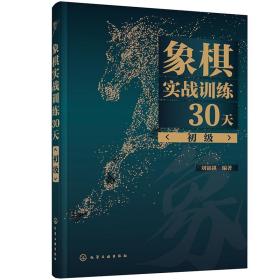
信息论与编码(英文版)/高等学校通信工程专业“十二五”规划教材
¥ 12.13 3.4折 ¥ 36 九品
仅1件
北京昌平
认证卖家担保交易快速发货售后保障
作者梁建武、罗喜英、郭迎 著
出版社中国铁道出版社
出版时间2015-09
版次1
装帧平装
货号A8
上书时间2024-11-01
- 在售商品 暂无
- 平均发货时间 16小时
- 好评率 暂无
- 最新上架
商品详情
- 品相描述:九品
图书标准信息
- 作者 梁建武、罗喜英、郭迎 著
- 出版社 中国铁道出版社
- 出版时间 2015-09
- 版次 1
- ISBN 9787113207700
- 定价 36.00元
- 装帧 平装
- 开本 16开
- 纸张 胶版纸
- 页数 204页
- 字数 319千字
- 正文语种 英语
- 丛书 高等学校通信工程专业“十二五”规划教材
- 【内容简介】
-
本系列教材拟分为三期,覆盖通信工程专业的专业基础课程和专业核心课程。教材内容覆盖和知识点的取舍本着全面系统、科学合理、注重基础、注重实用、知识宽泛、关注发展的原则,比较完整地构建通信工程专业的课程教材体系。第1期包括以下教材:
《信号与系统》、《信息论与编码》、《网络测量》、《现代通信网》、《通信工程导论》、《通信网络安全》、《北斗卫星通信》、《射频通信系统》、《数字图像处理》、《嵌入式通信系统》、《通信原理》、《通信工程应用数学》、《电磁场与电磁波》、《现代通信网络管理》、《微机原理与接口技术》、《微机原理与接口技术实验指导》。
本套教材如有不足之处,请各位专家、老师和广大读者不吝指正。希望通过本套教材的不断完善和出版,为我国计算机教育事业的发展和人才培养做出更大贡献。 - 【目录】
-
Chapter 1 Introduction
Before it starts, there is something must be known
1.1 What is Information
1.2 What is Information Theory
1.2.1 The Origin and Development of lnformation Theory
1.2.2 The Application and Achievement of Information Theory Methods
1.3 Forma/ion and Development of lnformation Theory
Questions and Exercises
Biography of Claude Elwood Shannon
Chapter 2Basic Concepts of Information Theory Preparation knowledge
2.1 Self-information and conditional self-information
2.1.1 Self-information
2.1.2 ConditionalSelf-information
2.2 Mutualinformation and conditionalmutualinformation
2.3 Source entropy
2:3.1 Introduction of entropy
2.3.2 Mathematics description of source entropy
2.3.3 Conditional entropy
2.3.4 Union entropy
2.3.5 Basic nature and theorem of source entropy
2.4 Averagemutualinformation
2.4. 1Definition
2.4.2 Physics sigriificance of average mutual information
2.4.3 Properties of average mutual Information
2.5 Continuous source
2.5.1 Entropy of the continuous source
2.5.2 Mutualinformation of the continuous random variable
2.6 Multi-marks discrete steady source
2.6.1 Mathematical model and classification of the source
2.6.2 The discrete source without memo
2.6.3 Multi-marks discrete steady source
2.6.4 Source entropy of discrete steady source and linut entropy
2.6.5 The source redundancy and the information difference
2.6.6 Markov information source
Chapter 3 Lossless source coding
3.1 Lossless coder
3.2 Lossless source coding
3.2.1 Fixedlength coding theorem
3.2.2 Unfixedlength source coding
3.3 Lossless source coding theorems
3.3.1 Classification of code and main coding method
3.3.2 Kraft theorem
3.3.3 Lossless unfixed source coding theore
3.4 Pragmatic examples of lossless source coding
3.4.1 Huffmancoding
3.4.2 Shannon coding and Fano coding
3.5 The Lempel-ziv algorithm
3.6 Run length encoding and the PCX format
Chapter 4 Limited distortion source coding
4.1 The start point of limit distortion theory
4.2 Distortion measurement
4.2.1 Distortion function
4.2.2 Average distortion
4.3 Information rate distortion function
4.4 Properties of R(D)
4.4.1 Minimum of D and R(D)
4.4.2 DraxandR(Dmax)
4.4.3 The under convex feature of R(D)
4.4.4 The decreasing feature of R(D)
4.4.5 R(D)is a continuous function of D
4.5 Calculation of R(D)
4.5.1 Calculation of R(D)of binary symmetric source
4.5.2 Calculation of R(D)of Gauss source
4.6 Limited distortion source encoding theorem
……
Chapter 5 Channel Capacity and Channel Coding
Bibliography
点击展开
点击收起
— 没有更多了 —












以下为对购买帮助不大的评价